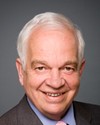I'm going to start with an admission. I was so familiar with Quebec's arguments regarding the differential treatment in Quebec for Hydro-Quebec and the treatment in Ontario. I wear my name well. I tend to doubt until the point has been proven.
If I had the slightest doubt in coming here today that the difference in treatment between Hydro-Quebec and Hydro One in Ontario was an argument and not a fact, I no longer have that doubt. You just convinced me that it's an intentional choice by the Government of Canada to treat Hydro-Quebec differently from the way it treats Hydro One in Ontario. I followed all your arguments throughout your explanation. About half an hour ago, you said
that in both cases--Hydro One and Hydro-Québec--we're looking at all the profits remitted to the government.
A moment ago you corrected yourself, saying:
profits remitted to the government by any crown corporation involved in hydro generation...
Which is different from what you said about half an hour ago, and the transcripts will show that very clearly. You moreover say that we constantly ask you
political questions, not technical questions.
And yet, fundamentally, every time we ask you the question, you hide behind a technical argument. You always say
that it's very difficult to isolate just those profits.
It seems to me the burden of proof is on your shoulders. Moreover you said this:
If there was a corporate restructuring in Hydro-Québec...
But which one?
What would it take for Hydro-Quebec to receive the same treatment?
There was a corporate restructuring at Hydro-Quebec, precisely to create different so-called “corporate” entities. Accordingly, the burden of proving whether Hydro-Quebec's figures are fictitious, when you separate production, generation, distribution and so on, is on your shoulders.
There is a prejudice at the very basis of your reasoning. Every time you talk about Quebec, Mr. McGirr, you say that the $250 million
is a figure advanced by Quebec.
That even makes the government members smile. That's rubbish and we won't even consider it. That's their argument.
Here's what I'm asking you. What information do you have concerning the $250 million, since this is a technical question?
Every time, you say
it's complicated. Isn't that why you have that job, because you want to take care of these complicated questions for us?
The question remains unresolved,
the information we have is that it is difficult to isolate.
That's why I'm asking you a technical question, not a question
of policy. What is the information that you have?
That's what you're telling me.
The information we have is that it is difficult to isolate.
I respectfully submit to you that Hydro-Quebec has done the work for you. You're telling us that you reject that out of hand, that you don't believe Hydro-Quebec's figures. You don't believe in the Government of Quebec's $250 million. What do you believe? What is
the information we have?
Is that technical enough for you? It isn't a policy question. It's a technical question. So answer it.








